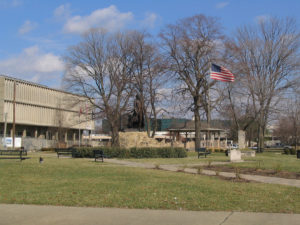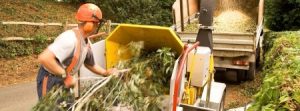We love to be the ones to continue learning, and today we learned how the top of the ground affects how the trees grow. Trees grow to the healthiest and live the longest in respects to a couple of things. Some of these things are soil type, water source, sunlight, and environmental factors. The topography or shape of the landscape affects almost all of these factors. We came across a great book that explains in detail about topography and they are an authority on the subject. This is only a excerpt from that book. Title: The Woodlot Management Handbook by author: Stewart hilts and Peter Mitchell
“Topography
“Topography,” or the actual shape of the physical landscape, is
another important ecological influence. Slopes may be steep or
almost flat, and they may face any direction. The direction in which
A slope face is called its “aspect.” Altitude is also an important
influencing factor.
The hardwood-forest region of eastern North America has an
enormous range of topographic conditions, from areas near sea
level to the northern Appalachian Mountains, from flat glacial lake
beds to steep rocky cliffs. In between are thousands of square miles
of rolling hills and river valleys.
Perhaps most unusual are the plant communities that are
found in unique topographic locations. The best example is the
ancient cedar forest on the vertical limestone cliffs of the Niagara
Escarpment. Extending through New York State west to form
Niagara Falls, then extending northwest through Ontario, and
curving around the north side of Lake Michigan into Wisconsin,
The cliffs of the Niagara Escarpment provide a unique habitat. The
gnarled and twisted eastern white cedar that 2ow directly out of
crevices in these cliffs have been shown to be to a thousand
years old, by far the oldest trees in eastern North America.
Sometimes these trees actually hang down the cliffs from the ledge
where their roots have gained a foothold.
Much more commonly, forest communities are influenced by the
aspect of the slope on which they grow. Slopes facing south and west
tend to receive more sunlight and be warmer, while north- and east-
facing slopes are cooler and receive less sunlight. This may result in sig-
nificant differences between ecological communities. A good example
of this local temperature difference is the fact that all major ski hills in
this region of the continent are located on north- or east-facing slopes,
where the snow is less likely to melt in the direct sunlight.
Large slopes cause air to drain downwards; the movement of air
keeps overnight temperatures on slopes slightly warmer than either
Seperate
wetland prevents direct runoff, holding back sediments or fertil-
izer that may otherwise be carried into the channel.
On open agricultural fields, or even more so in urban areas,
water runs off quickly into streams and rivers. In the woodland,
water is intercepted and used by trees directly, or runoff is slowed
so water infiltrates the soil replenishing the groundwater. Ground-
water, in turn, replenishes ponds, wetlands, and streams. With suf-
fhcient groundwater, springs develop, smaller streams run all year,
ponds and wetlands don’t dry out, and water quality is higher.
A “watershed,” or drainage basin, is the area of land drained by
one particular stream or river system. Within any large watershed
there are many smaller watersheds, or sub-watersheds, represent-
ing the drainage area of smaller streams.
In two comparable watersheds – one forested and the other
cleared for agriculture – streams in the forested landscape will have
higher water levels, higher water quality, steadier flow patterns at the
top or bottom reducing the risk of frost. Thus fruit trees
are
often grown on slopes to minimize late spring frost danger.”
The information contained in this excerpt is revealing. As you can see if you have different types of landscape it will yield different results. People that own large swaths of land with many different kinds of land know this. Here in the Midwest in Jeffersonville we even have a particular side that we hunt mushrooms on. So, keep an eye on your landscape, or topography, and call us if you need any tree service in Jeffersonville.

